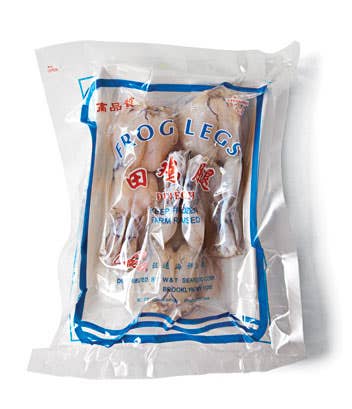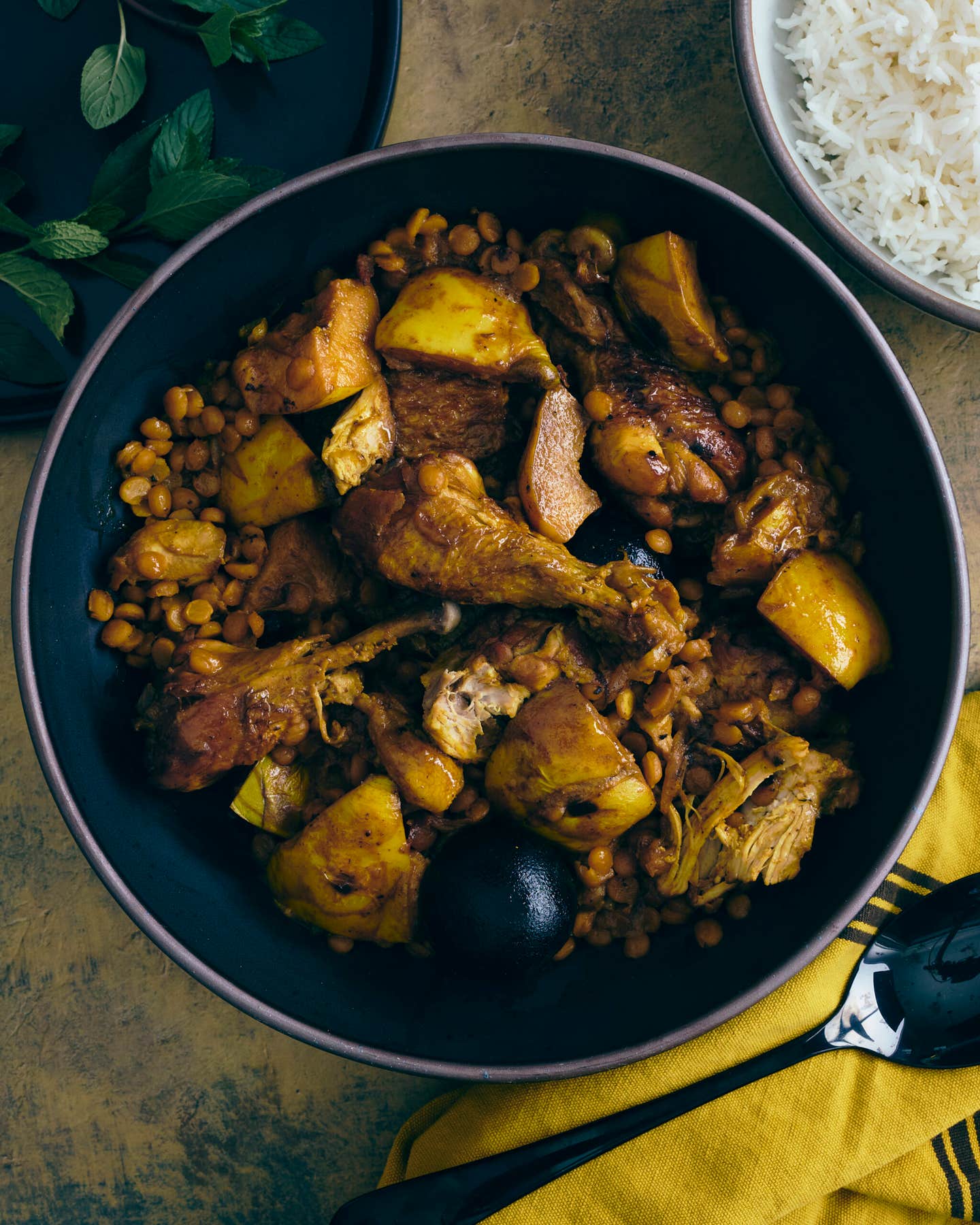
Frogs' legs appear in many Chinese, Vietnamese, Italian, Cajun, and French dishes, including our Provençal-style sauteed frogs' legs (see ** Sauteed Frogs' Legs**). Usually sold frozen and already cleaned, frogs' legs can be purchased at some large supermarkets (most often in the seafood department), through online seafood retailers, and at Asian markets, which may also sell fresh legs and even whole bullfrogs that must be cleaned and skinned at home. The majority of frogs' legs sold in this country come from aquaculture farms in Asia, where the frogs are bred to yield a meat that's whiter and milder-tasting than that of wild bullfrogs—though it's not impossible to find frozen frogs' legs that have come from wild-caught frogs, whose meat has a richer, gamier taste. Producers are not required to make the distinction on their packaging labels, but a good way to determine whether the legs you've purchased came from a wild frog or a farmed one is by looking at their color: legs from farmed frogs tend to have a lighter hue. Most frozen frogs' legs sold in this country are four to five inches long and usually weigh between two and four ounces per pair, each leg being roughly the size of a small chicken wing. They should be plump and have a healthy pink color. Each pair of frogs' legs is typically connected at the top by a small bone, which can be snipped with kitchen shears. Many cooks also trim away the feet with a paring knife. If using fresh, unskinned legs, just slide off the skin as if you were taking off a glove, then soak the legs for two hours in cold water to mellow the flavor.
Keep Reading
Continue to Next Story










